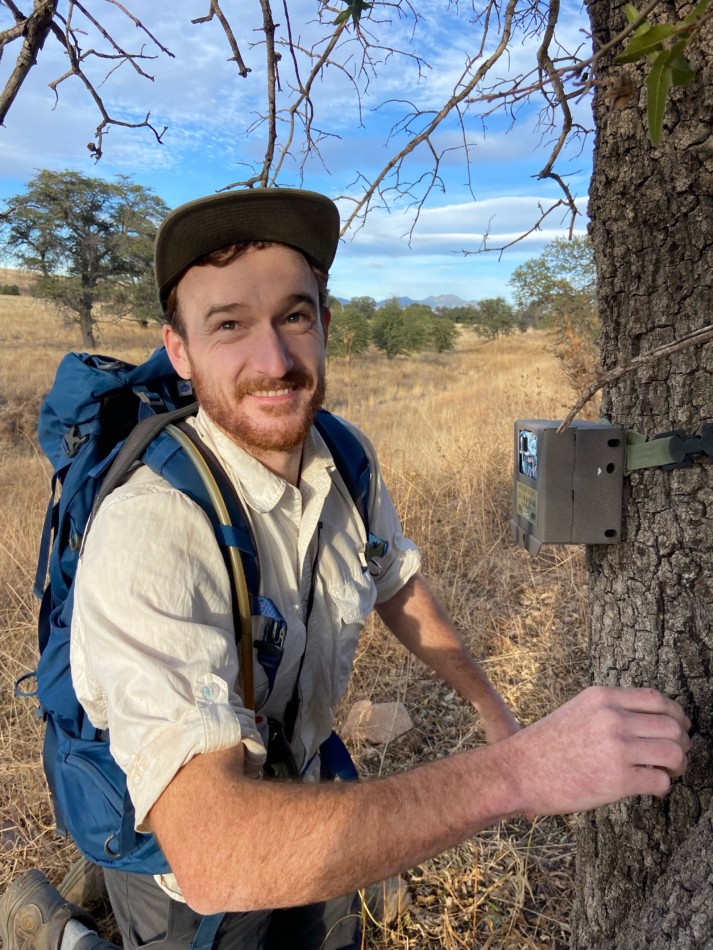“You might want gaiters,” suggested our Program Director Emily Burns a few days before my first trip to our Border Wildlife Study cameras in the Patagonia Mountains.

Eamon Harrity, our Wildlife Project Manager, checking a wildlife camera during his first outing to the field.
The suggestion caught me off guard as I normally associate these protective leg garments with hiking in snow or working with weed-whackers. I do not, in other words, associate gaiters with hikes through sunny oak grasslands. By the end of that first day though, as I picked at the hundreds of seeds and bits of dead vegetation in my socks, Emily’s suggestion made perfect sense! The forbs and grasses that erupted from the earth after the monsoon rains have now mostly gone to seed, and those seeds snag on any exposed piece of fabric.
Beyond a new appreciation for the utility of gaiters, my first two months visiting the Border Wildlife Study cameras between the Patagonia Mountains and the Huachuca Mountains have offered plenty of lasting impressions:
Diversity: The first months on the Border Wildlife Study have highlighted for me the diversity of the Sky Islands. From the rich diversity of plant species (roughly 1,500 plant species exist in the Catalina Mountains alone), to the vast array of wildlife species (we have documented >106 species on Border Wildlife Cameras since March 2020), to the variety of geologic formations (metamorphic and volcanic rocks blend in striking exhibitions of our geologic history) — the Sky Islands are incredibly diverse at all levels.
[Related Reading: What are the Sky Islands?]
Connectivity: My understanding that this is a region of corridors and connections has been reinforced by my visits to the Border Wildlife Study area. It is abundantly clear when standing on the slopes of the Patagonia Mountains that the mountain ranges, broad valleys, and meandering river corridors are invaluable pathways that connect the animals, plants, and people of the region.

Humility: Few regions support the diversity of large carnivores found in the Sky Islands. It is both humbling and inspiring to check a wildlife camera and learn that a black bear and her cub had traversed the drainage a few days prior.
Fragility: One jarring view of the imposing border wall cutting across the undulating landscape was enough to remind me of the fragility of this unique region and the urgent need for conservation efforts such as the Border Wildlife Study.
[Explore the U.S.-Mexico Border & what we’re doing about it.]
Most importantly, these first couple months have left me feeling excited and honored to contribute to the conservation work done by Sky Island Alliance and its partners in the region. Oh, and they have also convinced me to buy gaiters!
